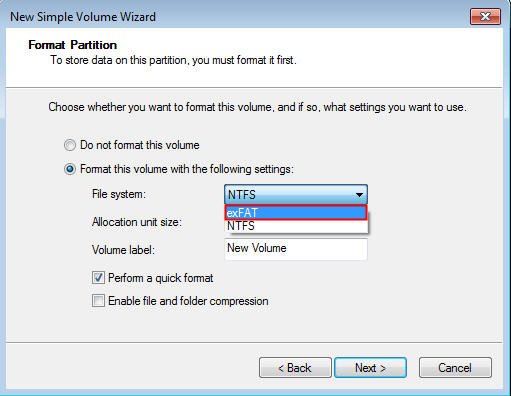
- Reformat drive formatted for mac on windows how to#
- Reformat drive formatted for mac on windows mac os#
- Reformat drive formatted for mac on windows install#
- Reformat drive formatted for mac on windows full#
I learned to manage a wide array of tasks a small business must handle - business strategy, facilities design, HR, payroll, taxes, marketing, all the way down to choosing telecom equipment and spec’ing a server system to help my team collaborate in real-time on dense media projects from multiple production rooms.

I launched and ran a well-regarded production company in San Francisco with a team of 9 brilliant, hard working people. Who is John Paulsen? A creator, family man and former small-business leader myself, I feel your pain (and joy) and hope you’ll enjoy the blog. If you have any trouble, please don’t hesitate to contact our Customer Service team available through Twitter, Facebook or via our Support Page. Select Partition to finish the formatting process You’ll get the following window advising you that this is a data destructive process and any data currently on the drive will be deleted.ġ0. Select Options and select GUID Partition Table
Reformat drive formatted for mac on windows mac os#
Change Format to Mac OS Extended (Journaled)ħ. Next to name you will see untitled 1 where you can name the drive.Ħ. Select Partition Layout and select 1 partitionĥ. Select the Partition tab on the right hand side of the Disk Utility WindowĤ. Select the Seagate drive on the left that shows the capacityģ. Open Disk Utility Applications >Utilities > Disk UtilitiesĢ. Now without further ado, here’s how you reformat the drive:ġ.
Reformat drive formatted for mac on windows install#
Or, if you’ve already got one of our Backup Plus for Mac units I mentioned above, and want to use that device with a PC, then you’ll want to install the following driver accessible here. If this is the case, it’s ideal to keep the drive in the original NTFS format and and simply add the “NTFS for Mac OS” driver, which you can download here. But before starting, it’s worth pointing out that with Seagate Backup Plus drives it’s not necessary to format the drive for Mac if you plan on using the drive between a Mac and Windows OS.
Reformat drive formatted for mac on windows how to#
This article will give you a step-by-step breakdown on how to format any drive to read and write using Mac OS. But sometimes a little help is needed, if you decide to start using your Windows drive mainly on your new Mac. Seagate Backup Plus comes in a couple varieties - one pre-formatted for Mac, the other pre-formatted for Windows but also readable on Mac. It’s backwards compatible and runs on all OS X versions starting from Tiger. Personal licensing allows you to install Tuxera NTFS for Mac on all your home computers with a single license.Like the commercials of years gone by, some people are PCs and others are Macs.

Tuxera NTFS for Mac and Tuxera Disk Manager work in the latest macOS and OS X 10.11 El Capitan. For reference, we explain in more detail what formatting is and why you need it here: Here’s how you format a drive using Tuxera Disk Manager: Formatting is the process of preparing a drive for use by an operating system. You may find that you first need to format the external drive so it can be used with both your Mac and your PC. Formatting drives with Tuxera Disk Manager

Tuxera Disk Manager lets you fully manage your hard drive and stored data regardless of the operating system. It also comes with Tuxera Disk Manager, a companion app that lets you format, check, and repair NTFS drives.
Reformat drive formatted for mac on windows full#
There’s a real easy solution for this, however: your Mac just needs a driver. Tuxera NTFS for Mac is a full read-write NTFS driver that enables your Mac to read and write NTFS-formatted drives. This prevents you from saving, editing, copying, or deleting anything stored on your drives using your Mac. The reason behind this? The file system used by Macs (HFS+) is different than the file system used in Windows (NTFS). Sharing data between a Mac running macOS or OS X and PCs running Windows may not be that straightforward. By default, Macs can only read files from Windows-formatted external hard drives, but not write to them.


 0 kommentar(er)
0 kommentar(er)
